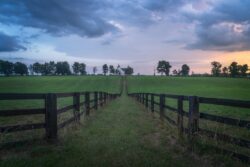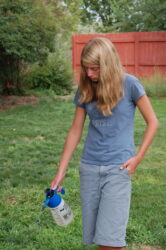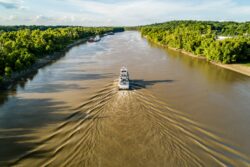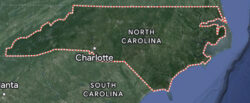Kentucky Bluegrass, a cool-season grass, experiences growth cessation primarily due to temperature extremes.
It thrives and grows actively during the cooler parts of the year, in spring and fall, when soil temperatures are between 50 – 65°F (10 – 18.3°C) and air temperatures are between 60 – 75°F (15.5 – 24°C).
Growth slows and eventually stops when temperatures rise above 75°F (24°C) in summer or drop significantly in winter, leading the grass to enter a state of dormancy.
Understanding Kentucky Bluegrass Dormancy
Summer Dormancy: Occurs during prolonged periods of high heat and insufficient moisture. Kentucky Bluegrass conserves energy and resources by turning brown and halting growth. It can recover when cooler temperatures return and adequate watering is resumed.
Winter Dormancy: As daylight decreases and temperatures drop, Kentucky Bluegrass also enters dormancy, conserving energy through the cold months. This is a natural cycle, and the grass will green up again with the return of warmer spring temperatures.
Maintenance During Dormant Periods
- Watering: While dormant, Kentucky Bluegrass’s watering needs decrease, but it’s crucial to prevent the soil from becoming completely dry, especially during hot, dry summers.
- Mowing: Reduce mowing frequency as the grass stops growing. Before winter, a final mow at a slightly lower height can help prevent fungal diseases.
- Fertilization: Late fall is an optimal time for fertilizing, as it supports root development and helps the grass green up faster in spring.
FAQs on Kentucky Bluegrass Growth
Q: How can I tell if my Kentucky Bluegrass is dormant or dead?
A: Dormancy is a protective mechanism, and the grass typically retains a capacity to rebound. If the crown of the grass plant, located at the soil’s surface, is alive, the grass is likely dormant, not dead.
Q: Is there a way to reduce dormancy in Kentucky Bluegrass?
A: Proper year-round maintenance, including adequate watering, appropriate fertilization, and disease management, can mitigate the impact of dormancy. However, dormancy due to extreme temperatures is a natural process that cannot be entirely avoided.
Q: Can overseeding help with dormancy periods?
A: Yes, overseeding with drought-resistant or heat-tolerant grass types can improve a lawn’s appearance during dormancy periods and contribute to a more consistently green lawn.
In Summary
- Kentucky Bluegrass growth halts primarily due to high summer temperatures or cold winter conditions.
- Dormancy is a survival mechanism, with the grass capable of recovering once favorable conditions return.
- Proper lawn care throughout the year can mitigate the effects of dormancy and support quicker recovery.
Sources and Further Reading
For a deeper understanding of Kentucky Bluegrass maintenance and dealing with dormancy, consider consulting:




